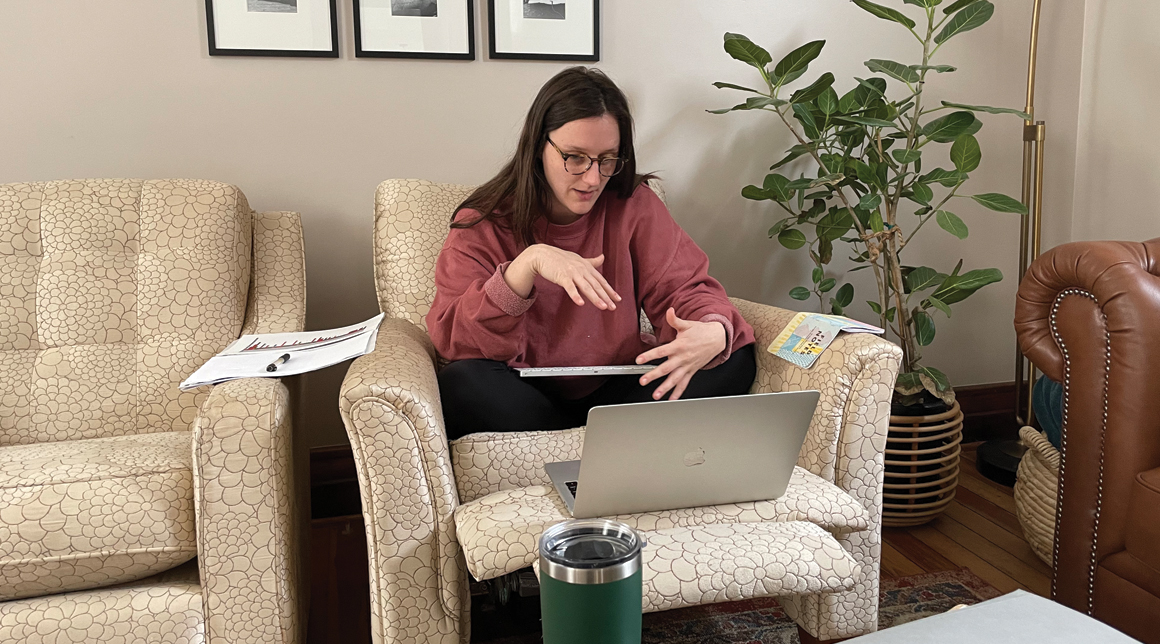CENTER FOR SERVICE AND ACTION | The Center for Service and Action’s Chelsea Brown faced a daunting task when she began her job overseeing recruitment to LMU’s 10 student service organizations. How could CSA ensure that the process of engaging new members was fair and organized, and that the end result would benefit the students and the organizations?
“I really enjoy looking critically at the systems in place and working with the student leaders to make them better,” said Brown, CSA’s assistant director for student engagement “It is a fun mix of people and process.” Brown’s spirit of magis has helped raise the acceptance of students into LMU’s service organizations, in actual number and in percentage.
Service of faith and promotion of justice is an integral part of LMU’s mission, and that is built into the service organization structure, which offers 35-60 students in each organization varied opportunities to be people with and for others, on campus and throughout Los Angeles. The organizations – Agapé, Belles, Creare, Crimson Circle, Espérer, Gryphon Circle, Ignatians, Magis, Marians and Sursum Corda – are frequently identified as essential LMU components. Members tutor schoolchildren, work with community organizations, organize the Special Games, assist with on-campus Mass, and much more.
Patrick Furlong, interim director of CSA, identified the service organization recruitment as a priority. “One of the biggest priorities I had since arriving in CSA is to improve the service org recruitment process,” said Furlong. “These communities are spaces of inclusivity and because of that, we also knew it could be better.” When he looked for an administrator who could improve the recruitment process, he saw Brown was the right person.
When she took the position in 2019, Brown became keenly aware that the method of filling slots in the organizations was often confusing for the groups and frustrating for the students. Brown replaced the previous invitation system of placement with a streamlined procedure based on the applicants’ preferences. This small change increased the invitations to join by 24 percent from the previous year.
Brown’s primary responsibility is to guide the presidents of the organizations in recruiting participants. In that role, she has found that leadership coaching and helping the presidents to think analytically about their processes is a key element. “They are not my organizations,” Brown said, “so I can look at them from afar and see ways to make them better. My aim is to create an environment where the students can come up with solutions, to develop the students’ abilities to solve problems.” In the course of a year, Brown meets weekly with the presidents as a group, and individually on a biweekly basis.
The COVID-19 pandemic shutdown forced Brown to again reassess the service organization recruiting process. It also inspired her. “The shutdown created room for examination the of process and allowed for discernment.” Brown saw that she would need to replace the customary in-person roundup of interested students with a virtual and more targeted approach. She also took the opportunity to institute a mandatory training focused on implicit bias for all service org members working with recruitment.
Instead of an event in Burns Back Court that gathered interested students, recruitment became a virtual endeavor. Brown credits many colleagues across campus for reaching out and finding students, particularly the far-flung first-year students. Those shoulder taps and social media mentions proved a success.
Through the pandemic year, the organizations have been able to be of service to some of their constituents, given the constraints, and a number of students volunteered with iTutors, a free tutoring service for L.A. Unified School District cooperatively administered by LMU School of Education, Speak UP Parent, and CSA.
Brown, who earned her M.A. in higher education student affairs at Baylor University, joined LMU in 2015 in Student Housing and lived in Del Rey South where she got to know how first-year students adjust to university life. She had a strong interest in faith-based education, and the mission of Jesuit schools brought her to the bluff. When the opportunity opened to join CSA, it combined her passions for student development and community engagement, and she saw it as an opportunity to continue to work at a university that has invested in her as a young professional.
As spring recruitment comes to a close, there are no signs of slowing down. As the organizations welcome the newest members over the next few weeks, Brown and her team of presidents are looking forward to adding a new fall recruitment process to target second-year students who missed their chance to apply this spring.




